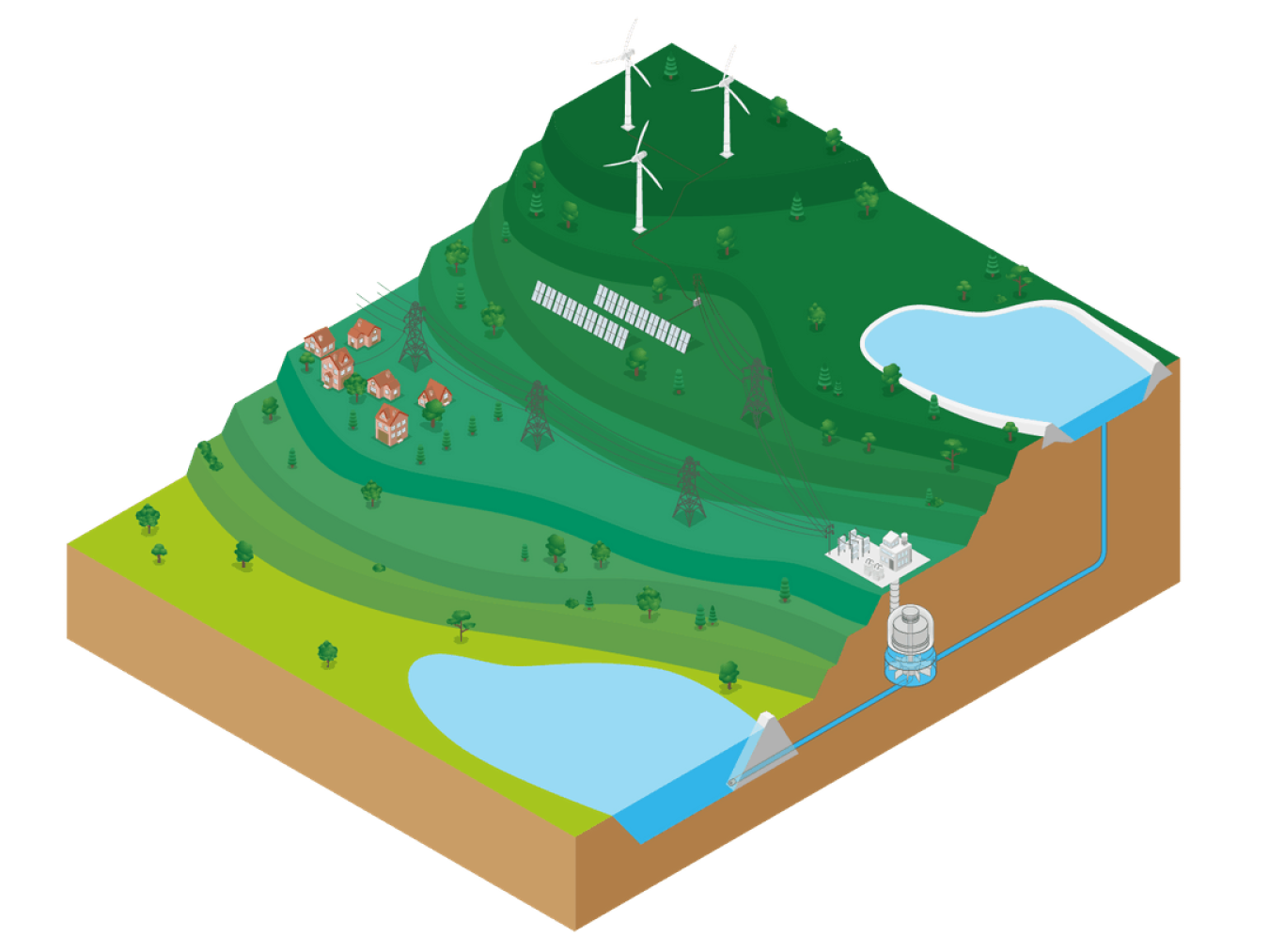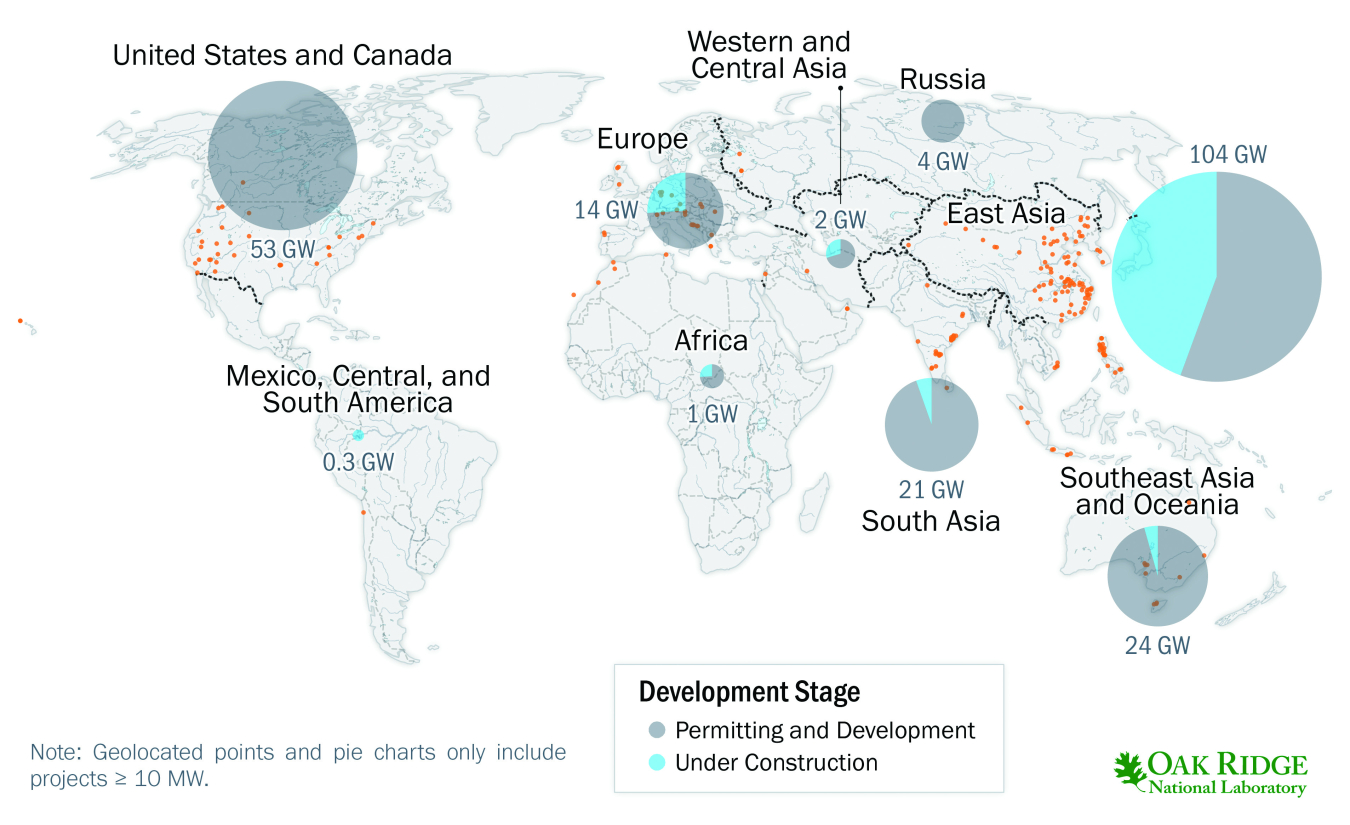The International Forum on Pumped Storage Hydropower is an initiative focused on developing guidance and recommendations for pumped storage hydropower (PSH) to support a transition to a clean energy future. PSH can provide numerous grid benefits, yet it faces many regulatory, economic, and siting challenges across the globe.
Founded by the International Hydropower Association (IHA) and the U.S. Department of Energy, the forum established a multi-stakeholder network composed of international governments, financial institutions, intergovernmental organizations, and universities, along with industry representatives such as owners, operators, developers, and engineers.
The forum was convened to develop solutions and transfer best practices and experience at the international scale with a mission of delivering sustainable, affordable, and reliable power while making contributions toward climate mitigation goals.
Read the forum’s executive summary for a high-level overview of topics discussed: International Forum on Pumped Storage Hydropower: September 2021 Executive Summary

Pumped storage hydropower is a clean energy source when used in combination with other renewable sources, such as solar or wind power. It currently contributes 95% of storage capacity in the United States. Image courtesy of the International Hydropower Association
Why Is Pumped Storage Hydropower Important?
Pumped storage can provide critical capacity, flexibility, energy balancing, and grid stability, and it currently contributes 95% of storage capacity in the United States. The technology stores energy in the form of water by pumping it to an upper reservoir during times of low demand or high renewable energy output. During peak energy demand, it generates power by releasing water from the upper reservoir to a lower reservoir through turbine generators.
This technology is an ideal complement to modern clean energy systems, because pumped storage can help integrate the intermittency and seasonality of variable renewables, such as wind and solar power, to the grid. This is particularly true as the United States and the world move toward a clean energy economy. As the most cost-effective form of grid energy storage currently available, pumped storage provides 22.9 gigawatts of energy capacity to the United States and over 160 gigawatts of energy capacity across the world. However, new pumped storage development faces several challenges, from issues with licensing and siting to problems with renumeration for the services it can provide. Accordingly, there has been very little new pumped storage development in the United States over the past 30 years.

As of 2019, there were 284 pumped storage hydropower projects producing a total of 226 GW of electricity. Additionally, 13 countries were constructing 50 PSH projects with a total capacity of 53 GW of electricity. China leads the PSH pipeline ranking with 102 GW of PSH projects; the United States and eight European countries are also within the top 20 countries with the largest PSH pipelines. Image courtesy of Oak Ridge National Laboratory
The Forum Structure
The International Forum on Pumped Storage Hydropower is co-chaired by Malcom Turnbull, former Australian Prime Minister, and Kelly Speakes-Backman, Acting Assistant Secretary for Energy Efficiency and Renewable Energy at the U.S. Department of Energy. Several international governments and regulators comprise the steering committee. Forum partners include utilities, system operators, PSH technology manufacturers, financiers and banks, environmental stakeholders, universities, and other parties interested in developing PSH.
IHA acts as the forum’s secretariat to facilitate the operational and functional aspects of the forum. The U.S. Department of Energy co-chairs the forum and provides support and technical expertise through its scientific researchers and deep national laboratory experience in pumped storage technology and the energy market. Find out more about the first meeting and the second meeting of the forum.
The Forum Working Groups
The forum is further organized into three working groups, each of which is led by a PSH technology developer and consists of stakeholders across the energy system. The working groups are helping governments and other energy stakeholders around the world to better understand and promote the development of PSH by sharing policy papers and guidance, sustainability tools and models, technology profiles, and technology capabilities and cost matrices.
Learn more about the forum’s working groups:
This working group will explore various markets to highlight current investment barriers as well as emerging opportunities for PSH development. A key focus of the group will be developing country- and region-specific policy recommendations for government decision-makers and regulators that derisk development.
Read the Working Paper: Pump it up: Recommendations for urgent investment in pumped storage hydropower to back the clean energy transition (September 2021)
This working group will raise awareness of PSH by undertaking several initiatives that focus on promoting its critical role in the energy transition. The group will focus on comparing PSH with other sources of system flexibility, further investigating potential sites, and highlighting the latest technological developments.
Read the Working Paper: Pumped Storage Hydropower Capabilities and Costs (September 2021)
Read the Working Paper: Innovative Pumped Storage Hydropower Configurations and Uses (September 2021)
This working group aims to promote and deepen the wider energy sector’s understanding of pumped storage’s sustainability profile. It will focus on both the benefits and impacts of development by testing PSH projects against existing sustainability tools—like the Hydropower Sustainability ESG Gap Analysis Tool—and assessing territorial value creation for local communities.
Read the Working Paper: Sustainability of Pumped Storage Hydropower (September 2021)
Questions and Comments
Please email: Hydrowires@ee.doe.gov

